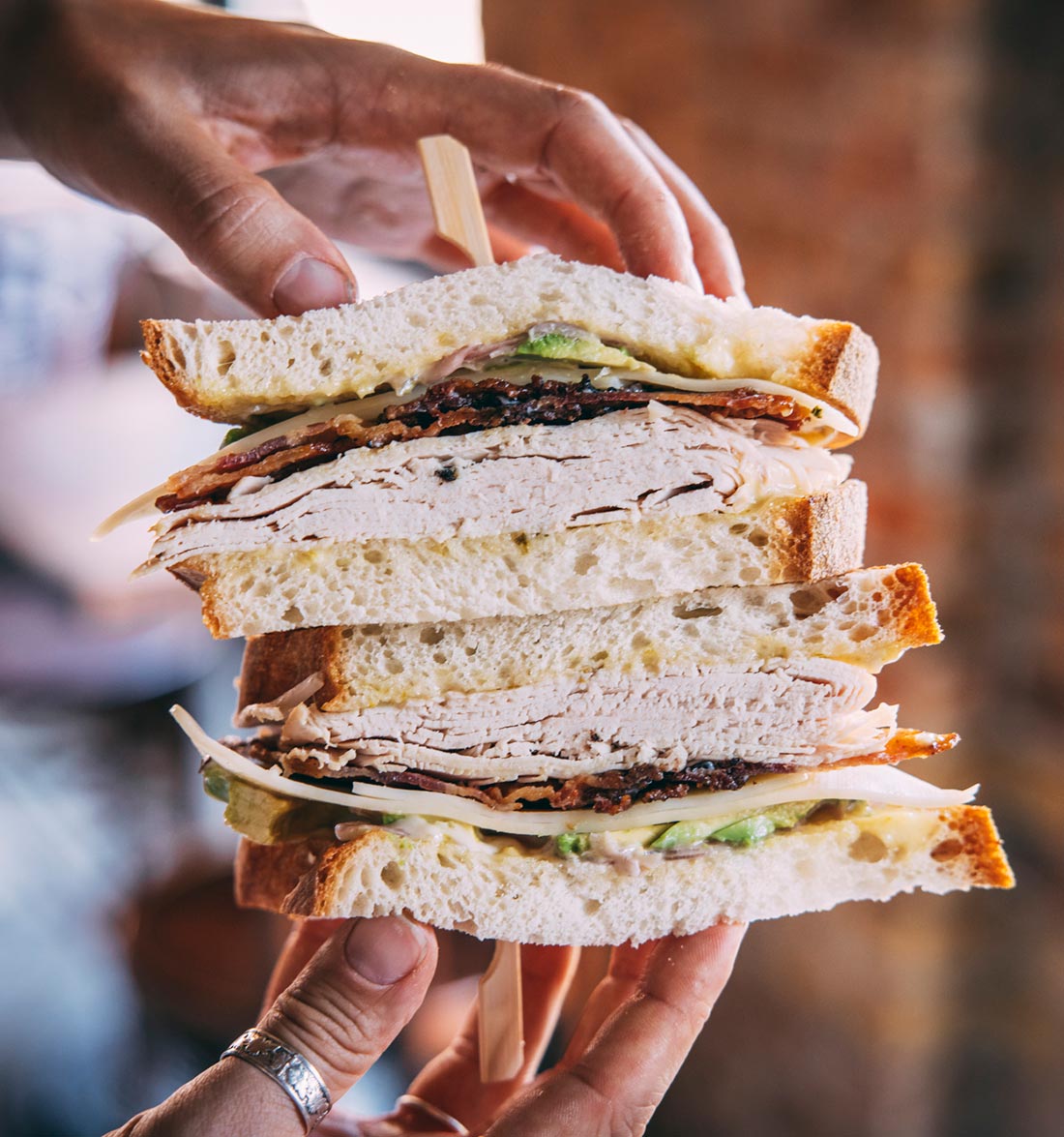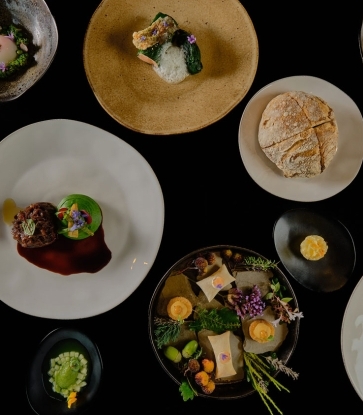In the summer, chef Eric Ziebold becomes a vegetarian. “I do that not for health reasons, not for ethical reasons. I do that as a reminder,” he says. “There's no comparing a tree-ripened peach in July or August to a peach you're going to buy at the grocery store in January. And so for me, it's a reminder to eat that way.”
On top of running his MICHELIN-starred restaurants, Kinship and Métier in Washington, D.C., Ziebold also tends a quarter-acre garden at RdV Vineyards in Delaplane, Virginia. He features the bounty from L’Abeille Garden at his Summer Garden Dinners at Métier and the From the Garden menu that just launched at Kinship this summer and runs through mid-fall. These vegetarian offerings allow diners to eat seasonally, too, just like Ziebold.
Ziebold started the garden in 2015, while his restaurants were still in development. It was a natural collaboration because of Ziebold’s relationship with RdV vigneron Rutger de Vink. “Rutger and I have a lot of similarities in philosophy and value on things,” he says.
Ziebold saw the garden at the vineyard as a way to cultivate an environment that was conducive to “casual collision,” a term he borrowed from Silicon Valley that describes how ideas spark when people spend more time together in the workplace.
He also believes that a chef’s garden is the ultimate muse. “We had a garden that we worked with at The French Laundry and yes, it's a way to get better products, fresher products. But, it's also a way to stimulate creativity,” he says.

That’s because you can never predict exactly what the season’s harvest will bring. “Last year was a horrible growing season,” he says. “This year we've had a bumper crop.”
Ziebold’s prized peppers—the aromatic ají dulce variety—grew in excess. “All of a sudden we're getting 20 pounds of ají dulce peppers. That's more than I would ever order,” he says. “So we can throw them away, which is not very cost-effective, or you can figure out, ‘okay, what else can we do with it?’”
In the case of the peppers, Ziebold and his team have gotten inventive. Métier offers an ají dulce sweet tea as an aperitif. Kinship’s new menu features ají dulce chilaquiles, which are fried corn tortillas layered with ají dulce marmalade, salsa verde, Asiago fresca and a fried hen’s egg.
With armfuls of Tulsi basil, it’s the same story. It goes into a dish simply called “L’Abeille Garden Basil,” with three types of basil. Grilled Vidalia onions and sautéed summer squash are bathed in blue basil, Tulsi basil broth and Genovese basil pistou.
This aligns with the design of Kinship’s regular menu, which is organized by category: “craft” showcases a cooking technique, “history” revisits classics or iconic dishes, “indulgence” highlights specialty items, and “ingredients” celebrates a specific product.
“It is an impetus for creativity,” he says. “Here's an ingredient. Here's a product. How do you build a dish around it? That is one of our focuses. And by having the garden, you're letting Mother Nature force your hand a little bit.”

L’Abeille Garden is primarily managed by Love & Carrots, and Ziebold makes the trip out weekly or bi-weekly to help out. He also guides the conversation on what and how much to plant. “I understand how to plant something. I understand how to germinate something. I understand how to harvest something,” he says. “I understand the culinary side of the applications very well, but how to make something grow better . . . they're way better at that than I am.”
The garden is divided into two equal-sized plots. One serves as an herb garden, with basil, mint, lemon verbena, anise hyssop, sage, rosemary and more. The second field is for perennial crops with longer maturation times, like La Ratte potatoes, celtuce, asparagus, raspberries, strawberries and garlic chives.
Between the two plots, Ziebold estimates that about 10 percent of the restaurants’ produce comes from the garden. “We can't grow everything,” he says. “I would need four full time farmers instead of one.”
At the end of each year, all 9,000 square feet are planted with spring garlic as a cover crop. When it comes up in the spring, the creative juices start to flow again.
“I like spring garlic before it even starts to mature to the point of forming a bulb, when it looks just like a leek,” he says. “You can treat it like a leek from like a vegetable standpoint except that it tastes like garlic.” It might end up in a soup or a bavarois.
As it starts to mature, they’ll pickle it in a dill pickle brine. “Think of it as a pickled leek if you would, but one that tastes like garlic,” he says. That gets used to garnish dishes throughout the year.
Toward the end of the season, Ziebold lets the remaining crop mature fully. “The nice thing about having a fresh garlic like that is that it's way more mild than the garlic you would be buying this time of year,” he says. “It's so much more mild and nutty that you can use a whole clove and not have it [have] an overpowering, bitter garlic flavor to it.”
While some chefs love to experiment with the science of molecular gastronomy, Ziebold prefers to dig deep into plant biology. “You do start to understand the life cycle of garlic,” he says.
“You get to play with fruits and vegetables at different levels of maturity, which for me is more interesting than researching what sort of chemical I need to add to something in order to get the effect that I would want.”
To celebrate the final months of the growing season at L’Abeille Garden, Ziebold is hosting two garden-focused food and wine pairing dinners at RdV on September 17 and 18.
Highlights from the menus include a dish that puts 250 pounds of La Ratte potatoes to good use. They’ll be braised in corn milk to impart the sweet corn flavor, and finished with grated truffles. The ají dulce peppers will also be making an appearance in a lamb dish paired with a bold RdV red wine.
The dish closest to Ziebold’s heart brings everything full circle—anise hyssop braised duck breast. “I hadn't worked with anise hyssop before I started playing around with it at RdV,” he says. “That's the plant that they had tried there when I started going out there. So those plants have been there for four years now, and they come back every year.”
Hero image by Love & Carrots.





















